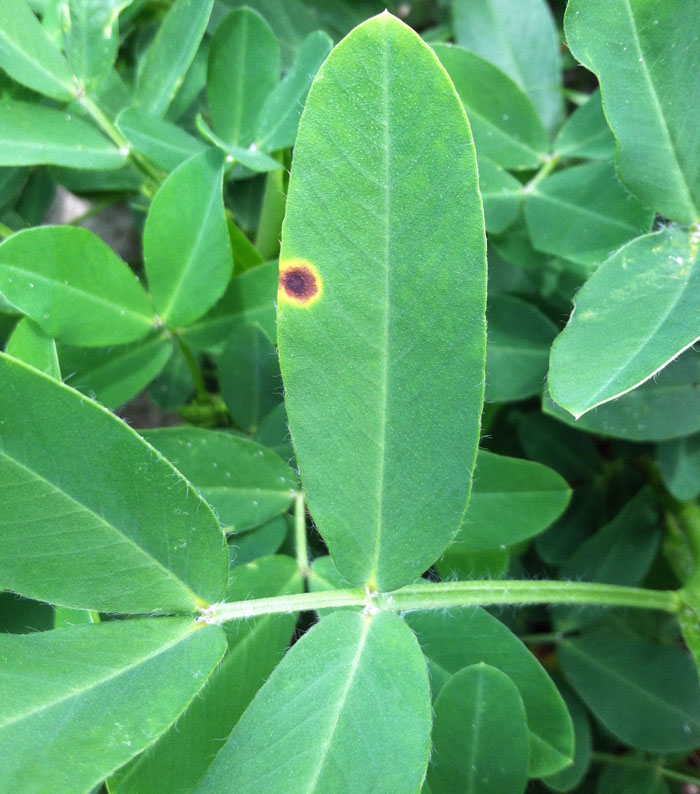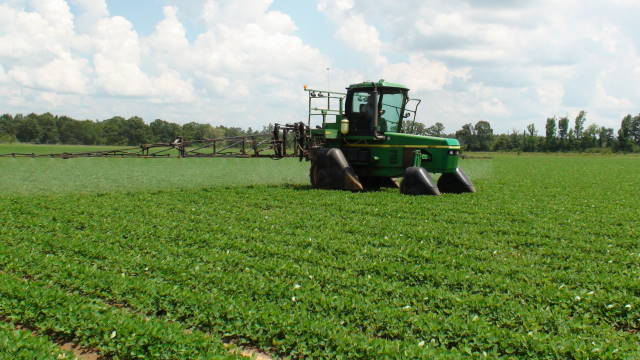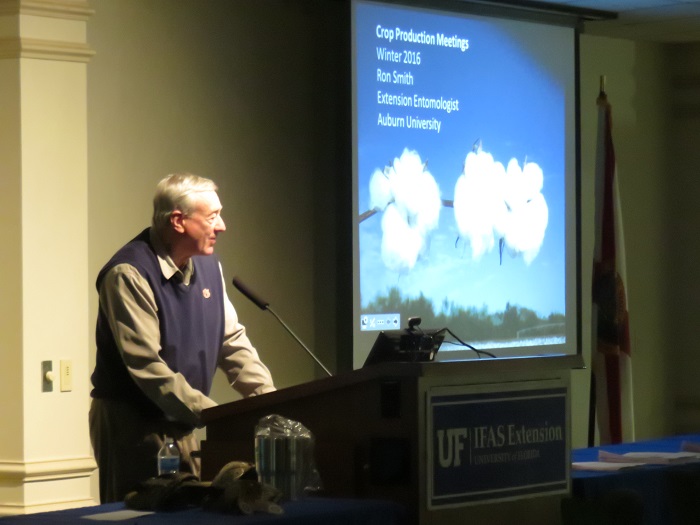
by Ethan Carter | May 13, 2016
Common examples of integrated pest management strategies include manipulation of planting date or row spacing, tillage variations, pesticide use, and variety selection. Most of these are typically used in combination for optimal pest management. Regarding peanut...

by Nicholas Dufault | May 13, 2016
Rebecca L. Barocco and Nicholas S. Dufault As soil temperatures are increasing, it is time for peanut growers in Florida, as well as many other areas of the southeast, to consider an early season white mold (a.k.a. stem rot) fungicide spray. The possibility of low...
by Joe Funderburk | May 6, 2016
Danielle Sprague and Joe Funderburk, North Florida REC, University of Florida, IFAS Tobacco thrips, Frankliniella fusca, are seedling pests of peanut, soybean, and cotton throughout the southern USA. The adults and larvae feed on the developing leaves, causing injury...

by Michael Mulvaney | Apr 29, 2016
Michael J. Mulvaney, Nick Dufault, Bob Kemerait Peanut growers take note, there are new import restrictions on propiconazole residues in peanuts going to the European Union (EU). Propiconazole is an active ingredient in the common peanut fungicides Tilt, Tilt/Bravo,...

by Ethan Carter | Mar 18, 2016
Jackson County Extension hosted the 2016 Panhandle Row Crop Short Course on Thursday, March 3, 2016. Extension Specialists from Florida, Georgia, and Alabama came to relay new and pertinent information concerning crops to farmers. Attendees were able to attain CEUs...
by John Doyle Atkins | Feb 19, 2016
After the 2015 growing season, depressed prices, areas of no rain for 8 weeks and yields ranging from zero to dancing around the 6,000 pound per acre mark, Santa Rosa County producers are looking toward the 2016 season with a heightened degree of concern. There are...





